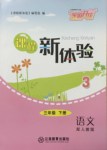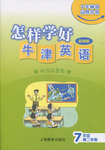题目内容

In winter,when the sun hides behind the clouds,everyone feels a bit low. You may be tired and find you want to sleep all the time. What you may not know is:you are suffering from (患有) SAD(季节性抑郁症).
But don't worry—it's normal. Colder temperatures and fewer hours of daylight can steal your energy and put you in a bad mood.
Read on to find out what SAD is and what you can do to help yourself or those around you.
These days,Linda,a US teenager spends most of her holidays sleeping instead of doing sports outside. She has also had trouble concentrating(集中精力) on her homework. When her mother asks her what's wrong,Linda doesn't know what to tell her. Linda may not realize it yet,but she's suffering from SAD. It causes people to sleep,eat sweet food and get sad or angry for no reason.
About 15 percent of American people now suffer from SAD in winter according to the US Department of Health. The US government has taken measures to help people beat it. Local communities encourage people to take part in activities such as exercise,dance or art. And they advise people not to eat too much sweet food.
Like in the US,cold northern European countries such as Finland,Iceland and Russia see a large number of people suffer from SAD every year. So,the sunlamp is widely used in these countries. It's an electric lamp which is just like a “little sun” that gives off light to make people think the sun is shining and feel better.
1.Colder ________ and less ________ are the main causes of SAD.
2.Linda is feeling ________ and doesn't ________ doing sports because she's suffering from SAD.
3. people suffer from SAD in northern European countries.
4.In some northern European countries,the ________ is widely used to make people feel____ .
5.Taking an active part in ________ and eating ________ sweet food can help people beat SAD.
1.temperature;daylight
2.sleepy;like
3.many;cold
4.sunlamp;better
5.sports;little
【解析】
试题分析:这篇短文主要介绍了发生在美国和北欧冬季的季节性抑郁症,并对如何解决此一问题提出了几点建议。
1.根据第二段Colder temperatures and fewer hours of daylight can steal your energy and put you in a bad mood.描述,可知填:temperature;daylight
2.根据These days,Linda,a US teenager spends most of her holidays sleeping instead of doing sports outside. 及本段描述,可知填:sleepy;like
3.根据最后一段cold northern European countries such as Finland,Iceland and Russia see a large number of people suffer from SAD every year.描述,可知填::many;cold
4.根据最后一段So,the sunlamp is widely used in these countries. It's an electric lamp which is just like a “little sun” that gives off light to make people think the sun is shining and feel better.描述,可知填:sunlamp;better
5.根据Local communities encourage people to take part in activities such as exercise,dance or art. And they advise people not to eat too much sweet food.描述,可知填:sports;little
考点:关于季节性抑郁症的说明文阅读
点评:本题中个别小题不能直接从文中找到答案,需要自己根据相关内容分析总结。一定要弄懂全文后再动手解答问题。书写答案时,注意首字母大写。为避免不必要的错误,只要能使用原文的就尽量使用原文回答问题,自己总结的答案注意人称和数的变化,要符合语法规则。

 芝麻开花课程新体验系列答案
芝麻开花课程新体验系列答案 怎样学好牛津英语系列答案
怎样学好牛津英语系列答案
Animals grow up in different ways. They have lots of lessons to learn.
Some animals are born helpless but their mothers protect them. A newborn kangaroo is the size of a bee. She stays in her mother’s safe pouch. She doesn’t open her eyes for at least five months. A newborn monkey cannot walk. He is carried by his mother.
Other baby animals can walk soon after they’re born. They learn to run with their mother when danger is near. A baby zebra(斑马)can run an hour after she is born.
Some baby animals are born in a place that is safe. Other baby animals are born in the open. Baby wolves are born in large holes. A baby elephant is born on open, grassy land. Other elephants make a circle(圈)to protect her.

Animals that drink their mothers’ milk are called mammals. A mother bear’s milk is fatty and rich. Baby bears need lots of fat to keep warm in winter. They have milk for six months. Baby zebras drink milk for six months or more! As baby animals grow they need solid(固体的)food. Baby lions eat what their mother can catch.
【小题1】Which baby animals don’t open their eyes for at least five months?
| A.Lions. | B.Zebras. |
| C.Kangaroos. | D.Elephants. |
| A.Drink milk. |
| B.Walk by herself. |
| C.Run with her mother. |
| D.Make a circle to protect herself. |
| A.Baby wolves are born in the open. |
| B.Newborn lions only eat solid food. |
| C.Newborn monkeys can walk but can’t jump. |
| D.Baby bears need lots of fat to keep warm in winter. |
根据短文内容,选择最佳答案。(每小题2分,共20分)
(A)
We all have our own ways of sharing our life experiences with others.
Photographers use cameras, artists use brushes, musicians use songs and writers use stories.
Spencer Johnson’s story Who Moved My Cheese? Shows changes exist in (存在于) our life. Life changes and so we do. We must change ourselves to face the changing environment, or we will fail.
Just look at the cycle (循环) of the seasons. Trees bud (发芽) in spring and in summer their leaves turn green. In autumn, their leaves start to fall onto the ground. When winter arrives, there are no leaves on trees. Next spring the cycle begins again. Since we know there are cycles in nature, we can prepare for them. We know it is colder in winter and hotter in summer, so we can dress properly.
Since we accept the cycles of nature, we should also accept the changes in our life.
We can prepare ourselves for changes by becoming more flexible(灵活的). We can regard the changes in our life as chances. As we keep changing ourselves, we can keep up with the changes in our life.
【小题1】What do writers use to share their life experiences?
| A.Stories | B.Newspapers | C.Basketballs | D.Pianos |
| A.changes exist in our life |
| B.we should move other’s things |
| C.we should use books to share our life experiences |
| D.there are difficulties in our life |
| A.we should wear warm clothes in winter |
| B.we should accept the changes in our life |
| C.we should prepare for the weather |
| D.leaves turn yellow in autumn |
| A.I have no chance to pass the test. |
| B.Exams are hard for me. |
| C.I have bad luck. |
| D.It’s good for me because I know there are more to learn. |
| A.Weather changes in different seasons. |
| B.Who Moved My Cheese? is a good book. |
| C.We should change ourselves when life changes. |
| D.We should not lose heart when meet with difficulties. |
The marathon(马拉松) in my town usually takes place in hot weather. My job was to follow the runners to help those who needed medical help. “We should stay behind the last runner, so take it slowly,” I said to the driver, Doug.
As it began, the front runners started to disappear(消失). Then I noticed a woman in blue running shorts and a white T-shirt. “ Doug, look!” We knew we were watching our “last runner”. Her feet turned in , yet her left knee turned out. Her legs were so crippled(畸形的) that it seemed impossible for her to be able to walk. How could she run a marathon?
We watched in silence as she slowly moved forward. We would move forward a little bit, then stop and wait for her. Then we would slowly move forward a little bit more. As I watched her try to put one foot in front of the other, I found myself breathing for her. I wanted her to stop, and at the same time, I hoped that she wouldn’t. Finally, she was the only runner left in sight. When the finishing line came into sight, we found the cheering people had all gone home. She slowly crossed through the line and lifted her hands, full of happiness.
I do not know the woman’s name, but since that day she has become a part of my life. For her, it was about finishing what she had set out to do, no matter what. When I think things are too difficult and want to say “I just can’t do it”, I think of the last runner. Then I realize how easy the task before me really is.
【小题1】When does the marathon usually take place in the writer’s town?
| A.In spring. | B.In summer. | C.In autumn. | D.In winter. |
| A.head | B.back | C.legs | D.arms |
| A.To win a good prize |
| B.To beat the other runners |
| C.To make friends with others |
| D.To finish what she had decided to do |